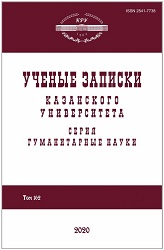Шведский язык официально-делового общения в Новое и Новейшее время
The Swedish Language of Formal Communication in the Modern and Contemporary Times
Author(s): Irina Vitalievna MatytsinaSubject(s): Pragmatics, Baltic Languages, Theory of Communication
Published by: Казанский (Приволжский) федеральный университет
Keywords: Swedish language; language of formal communication; language of law; officialese; language of non-fiction; language policy;
Summary/Abstract: Processes typical of the Swedish business language during the modern era were described. The study is of high importance, because this functional style of the Swedish language has been insufficiently investigated despite the regulation and normalization processes in it are of obvious interest to specialists in the Germanic languages. The main research method is synchronic analysis enabling examination and description the material in terms of the existing norms. A wide range of examples were provided to illustrate that in the modern era the language of law gradually gets closer to the language of notifications, rules, orders, regulations, etc., i.e., to documents that are usually implied when talking about officialese (the official and business style). It was concluded that the modern period was marked by not only the distinction between these two stylistic types of text, but also by the fact that they both acquired features common to Swedish non-fiction texts (sakprosan). In the 19th century, these processes were not very evident and, despite some minor innovations, the Swedish business language still contained a number of archaic features revealed in the so-called “substantival sickness” (substantivsjukan). A fundamental change took place in the 20th century and is associated with the spelling reform of 1906, as well as significant changes in such elements of the Swedish business language as syntax, morphology, and vocabulary that emerged mostly in the second half of the 20th century. The results obtained are of great importance for studying the Swedish stylistics, as well as for understanding the essence and roles of language policy in the process of normalizing and codifying the literary language.
Journal: Ученые записки Казанского университета. Серия Гуманитарные науки
- Issue Year: 162/2020
- Issue No: 5
- Page Range: 210-223
- Page Count: 14
- Language: Russian

